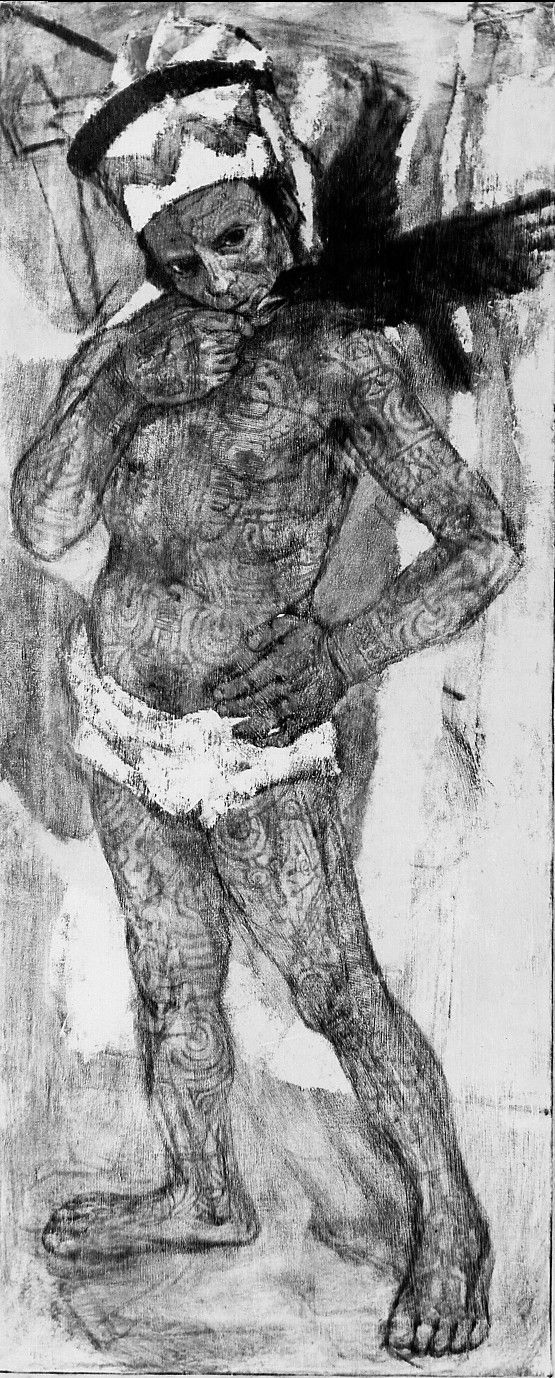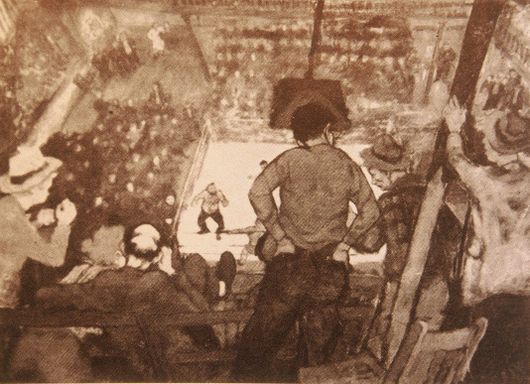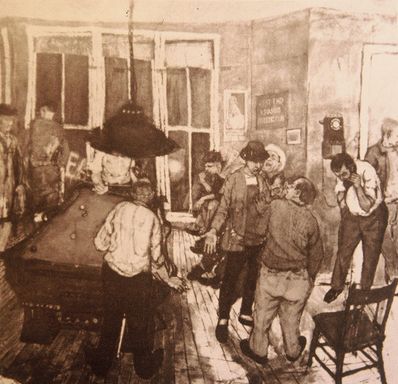Early figure painting
Reviewing a Riley exhibition art critic Martha Scott stated: "One surmises he studied drawing and anatomy at the National Academy, that he was exposed to the frescoes and gilding techniques of Florence, that he soaked up the treasures of the Uffizi and Pitti Palace.... No conjecture about an artist could be more erroneous!"
A long-standing affiliation with the Silvermine Guild of Artists in New Canaan, Connecticut began when he first exhibited there in 1951, he was later elected to the Board of Trustees and was made a Guild Fellow, the organizations highest honor. By that time, Bud Riley was established as a major artist in the area.
In 1958 Riley received national recognition through an article in American Artist magazine. In that article Riley described his love for art: Each painting is an adventure for me. I paint solely for the joy or excitement of painting and, as we all know, enjoyment comes almost entirely from anticipation or expectancy, rather than from realization. I like to feel that as I proceed I may encounter open door to unknown painting possibilities. Entering these doors and exploring the territory within, feeling my way through experimentation, I am accorded the delightful thrill that comes of discovery. Thus each painting becomes an entirely new venture, and the pattern of achievement may vary in each case.

Sleeping Clown 1960
The reason I was why I was so interested in clowns and Harlequins and that sort of thing is I Was born and grew up just within two blocks of the circus winter quarters. And so as closely a certain it's associated with what was happening with circuses. But the clown always appeared to me to be the earthy smell and character of the circus He might have been the low man on the totem pole He might have been the last in the pecking order. But still he had the character of what I felt the circus was all about.
Now here in this case, I feel that this sleeping clown becomes sort of a chameleon. He's absorbed the color surrounding him. The stripes of the tent behind them, the stripes of the of his trousers. All sort of meld together, bring him in.
Durwin's Arena 1945, The Strikers 1952, Worcester Poolroom 1957

I've always been interested in tattooed people. I've been interested in the tattoo and the design of the tattoo in itself.
This is a South Pacific native. On the tattoos on this man's body are identifications of his answers These particular designs that were tattooed on the body may be family identifications that came down through generations. And a certain design meant a certain relationship to a family.

Dancing mouse 1960
The clowns I began to create, just simply draw, none of this work has any pre sketching. And there's no pre concept of the content.
The work begins and they're alone. It's sketched out there whatever happens, happens purely by accident.
Now here we had these clowns, the three of them, especially the one in the upper left playing a violin, a very innocent sort of clown person. One that you wouldn't take offence at, one that was happy sort of person and the other fellow with the flute. No problem with him. You're not concerned with what he's thinking. The man in the lower left is involved with this rather large bizarre figure that might not even be a clown, And dressed in some rather odd clothing. Large, powerful hands. And from his hands dangled this little innocent mouse.
© Copyright. All rights reserved.


